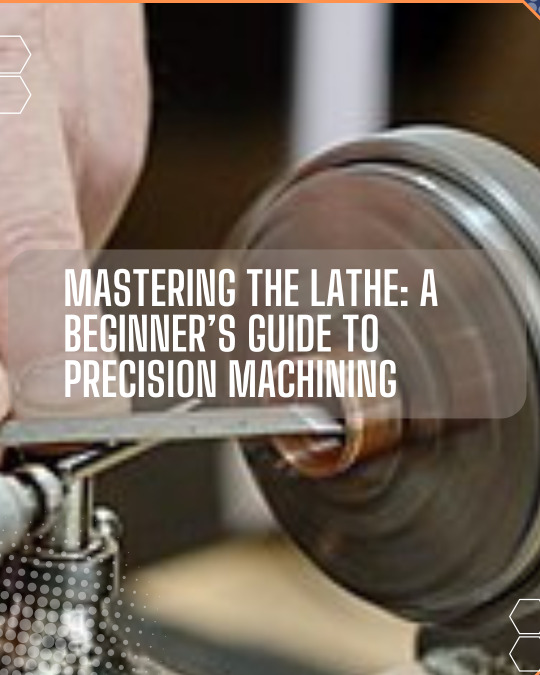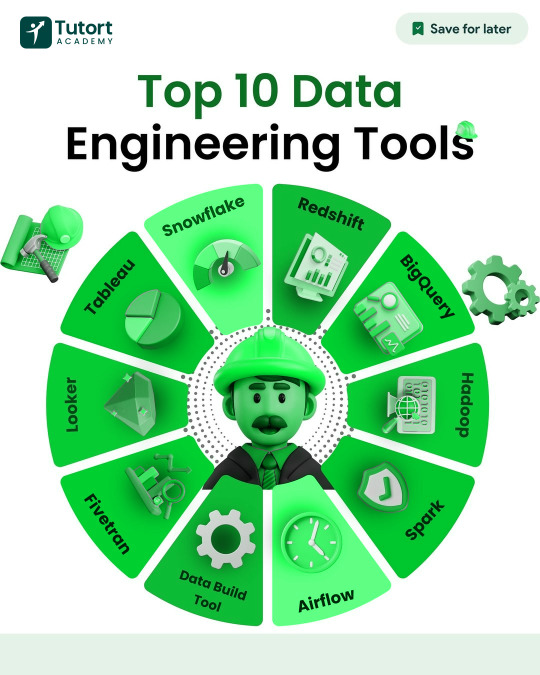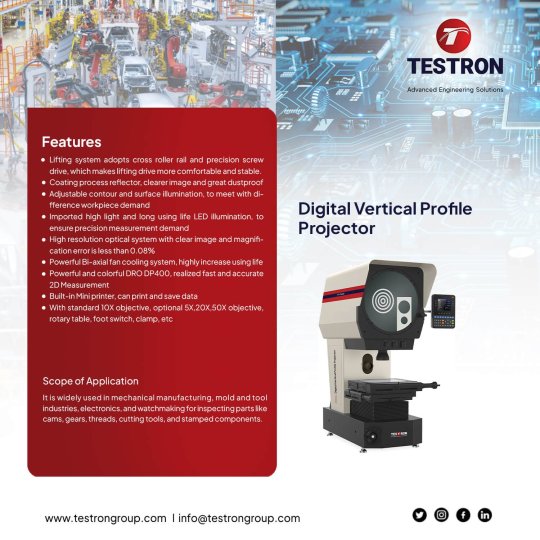#engineeringtool
Explore tagged Tumblr posts
Text
Mastering the Art of Machining: Using a Lathe Methods Guide

If you're passionate about precision, shaping materials, or creating something entirely from scratch, learning how to use a lathe is an essential skill. A lathe isn’t just a tool, it’s a gateway to mastering metalworking, woodworking, and countless creative projects. Whether you're crafting a custom doorknob, shaping a metal ring, or producing machine threads, a lathe is your key to efficiency, accuracy, and artistry.
So what exactly is a lathe?
At its core, a lathe is a powerful machine tool that rotates a workpiece along its axis while various cutting tools shape it. This shaping method allows for symmetry, consistency, and a professional-grade finish. Originally created to shape cylindrical metal objects, lathes have evolved dramatically. Today, modern lathes come with adjustable speeds, precision control, and advanced safety features that cater to both manual and automated machining needs.
Getting Started with a Lathe
Before you begin using a lathe, preparation is critical. Ensure your machine is stable, your cutting tools are aligned, and your workpiece is firmly secured in the headstock using a jaw chuck. Once you've installed the protective chuck guard and selected the appropriate spindle speed (RPM), you’re ready to begin shaping.
Always wear protective eyewear and avoid loose clothing. As you advance your tool toward the rotating material, make sure to proceed with a gentle, controlled pass. Whether you're creating smooth curves or precise cuts, your hand position, tool angle, and speed all matter.
Machining Methods with a Lathe
Among the most common methods is lathe drilling, which includes:
Center Drilling: For precise hole placement at the center axis.
Pilot Drilling: Used to guide larger drill bits and ensure chip clearance.
Larger Size Drilling: Gradually enlarges the hole while reducing RPM.
Reamer Drilling: Delivers the final polished hole size with strict precision.
Each technique demands control and consistency. A small error in alignment or feed rate can impact the entire operation. That’s why understanding each method and its purpose is so important.
Drill Bit Sharpening
You can even use a lathe to sharpen your drill bits, but you'll need to understand back rake angles and maintain alignment throughout the process. It’s technical, yes but incredibly satisfying once mastered.
Safety First
Safety is never optional when operating a lathe. Always stop the machine before adjusting the tool or changing spindle speed. Never use your hands to remove metal chips; instead, use a brush or pliers. Loose clothing, jewelry, and distractions are common causes of accidents and should be avoided at all costs.
Lathe Maintenance
Your lathe needs care, just like any precision tool. Regular lubrication, tightening of fasteners, and checking alignment should be part of your daily routine. A well-maintained lathe not only performs better but lasts much longer and keeps you safe.
Ready to dive deeper into the world of lathe machining? Click here for the full guide on Using a Lathe Methods for Machining
#LatheMachining#WorkshopTips#CraftWithLathe#Woodworking#Metalworking#MachinistLife#LatheProjects#LatheSafety#DIYMachining#MakersGonnaMake#PrecisionTools#EngineeringTool
0 notes
Text

Top Data Engineering Tools to Watch Out in 2024 | Tutort Academy
Today, data engineering tools are the most popular and in-demand in the ever-evolving big data domain across the globe. Data engineering tools are critical to building, monitoring, and refining complex data models, enabling organizations to enhance their business outcomes by harnessing data power.
0 notes
Text

Mitoya's Optical Profile Projectors are used for measuring and inspecting the dimensions and contours of objects. They typically use optics and light sources to project a magnified image of the object onto a screen, allowing users to measure various features with precision. These instruments are commonly used in manufacturing and quality control processes to ensure that products meet specified standards. It is the best Optical profile projecture device for measurements on digital display and data processor.
#milling#MitoyaInstruments#ProfileProjectors#Metrology#QualityControl#OpticalInstruments#ManufacturingTechnology#manufactureindustry#Engineering#IndustrialMetrology#QualityAssurance#ProductInspection#OpticalMeasurement#TechInnovation#EngineeringSolutions#ManufacturingQuality#MeasurementTools#engineeringtool#inspectiondevice#mechanicalengineering#engg#machines#mechanical#production#cnc machine#projector
0 notes
Text
Round display EYESPI tester is a go! 👁️🔍
This 1.3" round TFT display will be in the shop soon, thanks to this tester, which lets us quickly verify all functionality: We're reading a display bitmap off of the SD card, displaying it, and then pulsing the backlight. We do this all through the EYESPI connector https://www.adafruit.com/search?q=eyespi and this one is passing just fine. After we package the display, we can stock it in the shop!
#rounddisplay#tftdisplay#eyespi#electronics#hardwaretesting#adafruit#makercommunity#techgadgets#displaytesting#productlaunch#sdcard#backlight#innovative#techtools#hardwaredesign#electronicsengineering#circuits#techgear#makerspace#diyelectronics#engineeringtools#techinnovation#productdevelopment#hardwaretech#techtesting#roundtft#futuretech#smallbiz#techproducts#newtech
14 notes
·
View notes
Text

Revopoint Trackit Review: 3D Scanning Model Boats, Car Parts, and More
🔍 Hands-on testing across real-world projects, scan-to-print workflows, and field setups
📄 Article: https://3dwithus.com/revopoint-trackit-review-3d-scanning-model-boats-car-parts-furniture
#3Dscanning#Revopoint#3DScanner#ScanToPrint#ModelBoats#classiccarcCars#3DPrinting#EngineeringTools#Makers
3 notes
·
View notes
Text
Best Concrete Testing Lab Equipment Manufacturer in India
Concrete testing is an essential part of civil engineering, ensuring that materials used in construction meet the necessary strength and durability standards. In our latest blog post, we’ve explored the best concrete testing lab equipment that engineers and researchers rely on for precision and accuracy.
Why is Concrete Testing Important? Concrete testing helps to determine the material’s performance, stability, and strength, ensuring it’s up to code for use in construction projects.
Must-Have Concrete Testing Equipment
Compressive Strength Testing Machines: Ensure your concrete can withstand pressure and heavy loads.
Slump Test Apparatus: Evaluate the workability and consistency of fresh concrete.
Concrete Permeability Test: Assess how resistant your concrete is to water penetration.
If you’re involved in construction or civil engineering, understanding the right equipment for concrete testing can significantly impact your projects. Read the full blog and dive deeper into the best tools for concrete testing: Concrete Testing Lab Equipment Manufacturer.
#ConcreteTesting#LabEquipment#CivilEngineering#Construction#TestingTools#ConcreteStrength#EngineeringTools#CivilEngineer#aticoindia
1 note
·
View note
Text
Asphalt Paving Edge Cutter 😲😆
#desiviralrecap#AsphaltPaving#EdgeCutter#RoadConstruction#PavingSolutions#ConstructionTools#PavingEquipment#AsphaltMaintenance#ConstructionLife#WorksiteTools#RoadWork#HeavyMachinery#ConstructionInnovation#EngineeringTools#WorkSmarter#AsphaltEdgeCutter#PavingInnovation#SmartConstruction#ToolTech#RoadBuilding#PavingTech#ConstructionIndustry#ToolsOfTheTrade#WorkHardPlayHard#IndustrialTech#TechInConstruction
1 note
·
View note
Text
Al Badri Traders Co LLC

Welcome Al Badri Traders Co LLC to the TradersFind family!🎉We’re delighted to have you on our platform.
Find out their wide range of Manual Valves, Pressure Gauges, Instrumentation, Calibration System and many more at: https://www.tradersfind.com/seller/al-badri-traders-co-llc
#albadritraders#manualvalves#pressuregauges#instrumentation#calibrationsystem#tradersfind#newseller#qualityinstruments#industrialsupplies#engineeringtools#industrialequipment#valvesupplier#measurementtools#precisioninstruments#calibrationservices#uaemanufacturing#b2bmarketplace#reliablesupplies#industrialsolutions#uaebusiness#uae#business
2 notes
·
View notes
Link
#advancedmeasurementtools#design-focusedtools#engineeringtools#high-endtools#luxurymeasuringtools#modernmeasuringdevices#precisiontools#premiumengineeringtools#professionalmeasuringinstruments#sensorydesign#Tiroler2.0#titaniumgadgets#titaniummeasuringtool#tooldesigninnovation
0 notes
Text
Tired of Measurement Inconsistencies Slowing Down Your QC?

Introducing the TT-P400 Digital Vertical Profile Projector – engineered for next-level dimensional analysis and precision profiling.
Designed for inspecting complex contours, fine geometries , and high-accuracy components, the TT-P400 is the go-to solution for mechanical, tooling, and electronic part evaluation. From camshafts to gears , this system magnifies your precision, streamlines your process, and strengthens your quality assurance workflow.
Key Advantages:-
Advanced LED projection for clear, bright imaging
Up to 0.08% magnification error for ultra-precise measurements
Rapid , accurate 2D measurement with powerful DRO
Ergonomic design with stable roller rail drive for repeatability
Whether you're in automotive, aerospace, electronics , or mold manufacturing, this profile projector is purpose-built to meet the growing demand for exacting measurements.
See your components in a whole new dimension.
#DigitalProfileProjector#VerticalProfileProjector#OpticalMeasurement#PrecisionInspection#MetrologySolutions#QualityControlEquipment#NonContactMeasurement#ManufacturingQuality#IndustrialInspection#EngineeringTools#CNCMeasurement#ToolRoomSolutions#AerospaceInspection#AutomotiveQuality#ElectronicsInspection#IndiaManufacturing#UKEngineering#USManufacturing#UAEIndustry#QualityAssurance
0 notes
Text
Modular Instruments Market Projected to Reach USD 8,397.06 Million by 2034 | CAGR: 9.5%
Modular Instruments Market Analysis: Opportunities, Innovations, and Growth Potential Through 2034 Global Modular Instruments Market size and share is currently valued at USD 3,405.02 million in 2024 and is anticipated to generate an estimated revenue of USD 8,397.06 million by 2034, according to the latest study by Polaris Market Research. Besides, the report notes that the market exhibits a…
#Automation#DataAcquisition#ElectronicsComponents#ElectronicTesting#EngineeringTools#Instrumentation#LabInstruments#MarketForecast#ModularHardware#ModularInstruments#PXI#RFTesting#SignalAnalysis#TechnologyTrends#TestAndMeasurement
1 note
·
View note
Text
Signal Processing Basics with MATLAB
Signal processing is a vast and essential field in engineering and science, enabling us to analyze, interpret, and manipulate signals for various applications. MATLAB, a high-level language and interactive environment, offers powerful tools and built-in functions that simplify many signal processing tasks. This blog will guide you through the basics of signal processing using MATLAB, covering essential concepts, methods, and examples.

Signal Processing
Introduction to Signal Processing
Signal processing involves the analysis, interpretation, and manipulation of signals. Signals are functions that convey information about the behavior or attributes of some phenomenon. They can be in the form of electrical voltages, sound waves, or even data sequences. The primary objective of signal processing is to extract useful information from these signals, enhance them, or transform them into a more desirable form.
Types of Signals
Continuous-Time Signals: These are defined at every instant of time and are typically represented as analog signals. Examples include audio signals, temperature readings, and electromagnetic waves.
Discrete-Time Signals: These are defined only at discrete intervals of time and are usually represented as digital signals. Examples include digital audio, sampled sound waves, and digital images.
MATLAB for Signal Processing
MATLAB provides a comprehensive suite of tools for signal processing, making it an ideal platform for both beginners and advanced users. Its built-in functions and toolboxes allow for efficient analysis, visualization, and manipulation of signals.
Key MATLAB Toolboxes for Signal Processing
Signal Processing Toolbox: Offers functions and apps for analyzing, preprocessing, and extracting features from signals. It includes capabilities for filtering, spectral analysis, and time-frequency analysis.
DSP System Toolbox: Provides algorithms and tools for designing and simulating signal processing systems. It includes support for filters, transforms, and statistical operations.
Wavelet Toolbox: Used for time-frequency analysis, compression, and denoising. It provides functions for wavelet transform, which is particularly useful for analyzing non-stationary signals.
Basic Concepts in Signal Processing
Sampling
Sampling is the process of converting a continuous-time signal into a discrete-time signal by taking samples at regular intervals. The sampling rate, typically measured in samples per second (Hz), must be high enough to capture all the significant details of the signal without introducing aliasing.
Filtering
Filtering is used to remove unwanted components from a signal, such as noise, or to extract useful parts of the signal. There are several types of filters, including:
Low-pass filters: Allow signals with a frequency lower than a certain cutoff frequency to pass through and attenuate frequencies higher than the cutoff.
High-pass filters: Allow signals with a frequency higher than a certain cutoff frequency to pass through and attenuate frequencies lower than the cutoff.
Band-pass filters: Allow signals within a certain frequency range to pass through and attenuate frequencies outside this range.
Fourier Transform
The Fourier Transform is a mathematical transform that decomposes a function or a signal into its constituent frequencies. It is a fundamental tool in signal processing for analyzing the frequency content of signals.
Time-Frequency Analysis
Time-frequency analysis methods, such as the Short-Time Fourier Transform (STFT) and wavelet transform, are used to analyze signals whose frequency content changes over time. This is particularly useful for non-stationary signals like speech and music.

Signal Processing with MATLAB
Signal Processing with MATLAB
Getting Started
To start signal processing in MATLAB, you first need to import or generate signals. MATLAB can read signals from various file formats, such as WAV, MP3, or text files. You can also generate synthetic signals using built-in functions.
% Example: Generating a simple sine wave Fs = 1000; % Sampling frequency t = 0:1/Fs:1-1/Fs; % Time vector f = 5; % Frequency of the sine wave x = sin(2*pi*f*t); % Sine wave signal
Signal Visualization
Visualization is a crucial step in signal processing, allowing you to understand the signal's characteristics better.
% Example: Plotting a sine wave plot(t, x); title('Sine Wave'); xlabel('Time (s)'); ylabel('Amplitude');
Filtering Signals
MATLAB provides several functions for designing and applying filters.
% Example: Designing and applying a low-pass filter d = designfilt('lowpassiir', 'FilterOrder', 8, 'PassbandFrequency', 0.2, ... 'PassbandRipple', 0.2, 'SampleRate', Fs); y = filter(d, x);
Frequency Analysis
You can perform frequency analysis using the Fourier Transform.
% Example: Performing Fourier Transform X = fft(x); f = (0:length(X)-1)*Fs/length(X); plot(f, abs(X)); title('Magnitude Spectrum'); xlabel('Frequency (Hz)'); ylabel('Magnitude');
Time-Frequency Analysis
For non-stationary signals, time-frequency analysis provides valuable insights.
% Example: Short-Time Fourier Transform spectrogram(x, 256, 250, 256, Fs, 'yaxis'); title('Spectrogram');
Applications of Signal Processing
Signal processing is used in a wide range of applications, including:
Audio Processing: Enhancing sound quality, noise reduction, and audio compression.
Image Processing: Improving image quality, edge detection, and image compression.
Communication Systems: Signal modulation, demodulation, and error correction.
Medical Signal Processing: Analyzing ECG and EEG signals for diagnostics.
Speech Processing: Speech recognition, synthesis, and enhancement.

Applications of Signal Processing
Conclusion
Signal processing is a crucial field that enables us to extract valuable information from various types of signals. MATLAB provides a versatile platform for performing a wide range of signal processing tasks, from basic analysis to advanced techniques. By leveraging MATLAB's powerful toolboxes, you can efficiently process, analyze, and visualize signals for numerous applications.
FAQs
What is the difference between analog and digital signals?
Analog signals are continuous signals that vary over time, while digital signals are discrete and represent analog signals in binary form.
Why is MATLAB preferred for signal processing?
MATLAB offers a rich set of built-in functions and toolboxes specifically designed for signal processing, making it easy to perform complex analyses and visualizations.
How do I choose the right filter for my signal?
The choice of filter depends on the characteristics of your signal and the specific requirements of your application. Consider factors such as cutoff frequency, filter order, and the type of noise you want to eliminate.
Can MATLAB handle real-time signal processing?
Yes, MATLAB can handle real-time signal processing, especially with the use of the DSP System Toolbox, which provides tools for designing and simulating real-time systems.
What are some common challenges in signal processing?
Common challenges include dealing with noise, aliasing, computational complexity, and the need for accurate models to represent signals and systems.
#SignalProcessing#MATLABSignalProcessing#LearnMATLAB#DSPBasics#MATLABForEngineers#DigitalSignalProcessing#EngineeringTools#TechForStudents#ScientificComputing#MATLABTutorial#AssignmentHelp#AssignmentOnClick#assignment#machinelearning#aiforstudents#assignmentwriting#assignment help#assignment service#assignmentexperts
0 notes
Text
How To Create A Versatile Tooling System For Low-Volume, High-Mix Production

In the current fast-paced manufacturing landscape, low-volume, high-mix (LVHM) production is gaining traction — particularly among machine shops catering to specialized markets, prototyping, and custom components. To remain competitive, these enterprises must minimize setup durations, streamline tooling variations, and uphold precision across a range of part families. The answer? A versatile tooling system that incorporates modular, indexable boring tools and quick-change mechanisms. Here’s a guide on how to construct one.
Read more: How To Create A Versatile Tooling System For Low-Volume, High-Mix Production
#BoringBars#PrecisionBoringBars#MicroBoringKit#BoringToolManufacturer#CNCBoringTools#MetalworkingTools#MachiningSolutions#ToolingSolutions#EngineeringTools#FineBoringTools#ToolingManufacturer#PrecisionToolManufacturer#MadeInIndiaTools#CNCMachiningTools#IndustrialTooling#ToolMakersIndia#CuttingToolsIndia#MachineToolManufacturer#ToolingExperts#FineTechToolings
0 notes
Text
#Pickering Interfaces#PXImate#TestandMeasurement#PXI#EngineeringTools#ModularTest#Instrumentation#Timestech#electronicsnews#technologynews
0 notes
Text
Wooo, this one is for all of our fans of fans.

We got some 5V USB-cable fan samples, and we're testing them out. These are handy when you need air cooling or to add motion to lightweight robotics. They come in various sizes, from petite 4cm to bountiful 9cm, and have two mesh screens to keep wires and fingers from getting caught in the blades.
#adafruit#usbfan#aircooling#electronics#makerprojects#robotics#diycooling#techgadgets#engineeringtools#makerspace#techtesting#innovation#fanatics#hardwarehacks#diyelectronics#portablefan#smartgadgets#usbtech#airflow#fanprojects#usbtools#cooltech#tinkerers#gadgettesting#roboticsprojects#coolingfan#techdesign#engineeringlife#aircoolingfans
17 notes
·
View notes
Text
instagram
Getting Started with MATLAB: A Beginner's Guide
#MATLABBasics#LearnMATLAB#CodingForBeginners#EngineeringTools#MATLABTutorial#StudentLearning#DataWithMATLAB#SunshineDigitalServices#TechEducation#ProgrammingEssentials#Instagram
0 notes